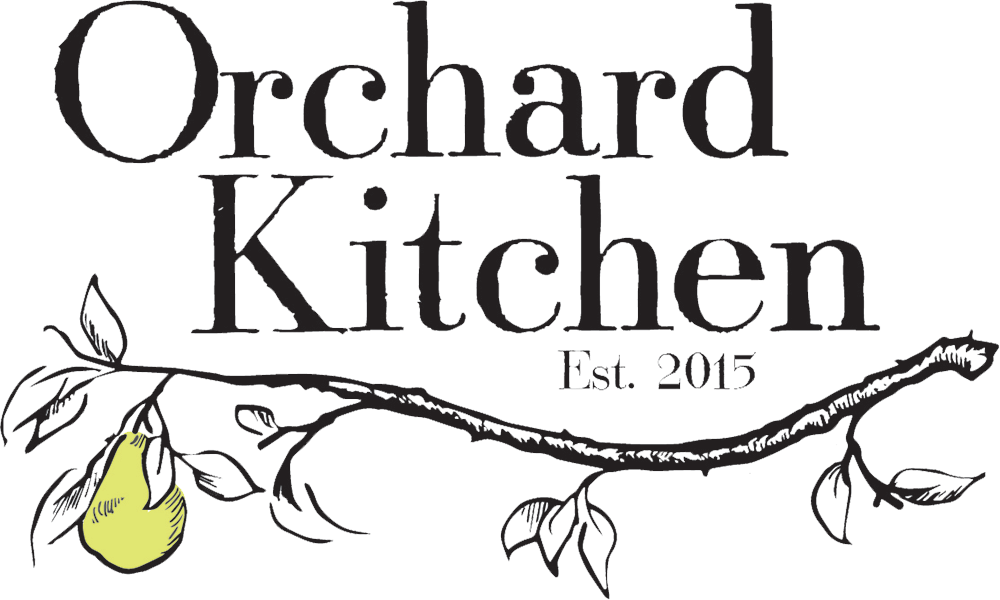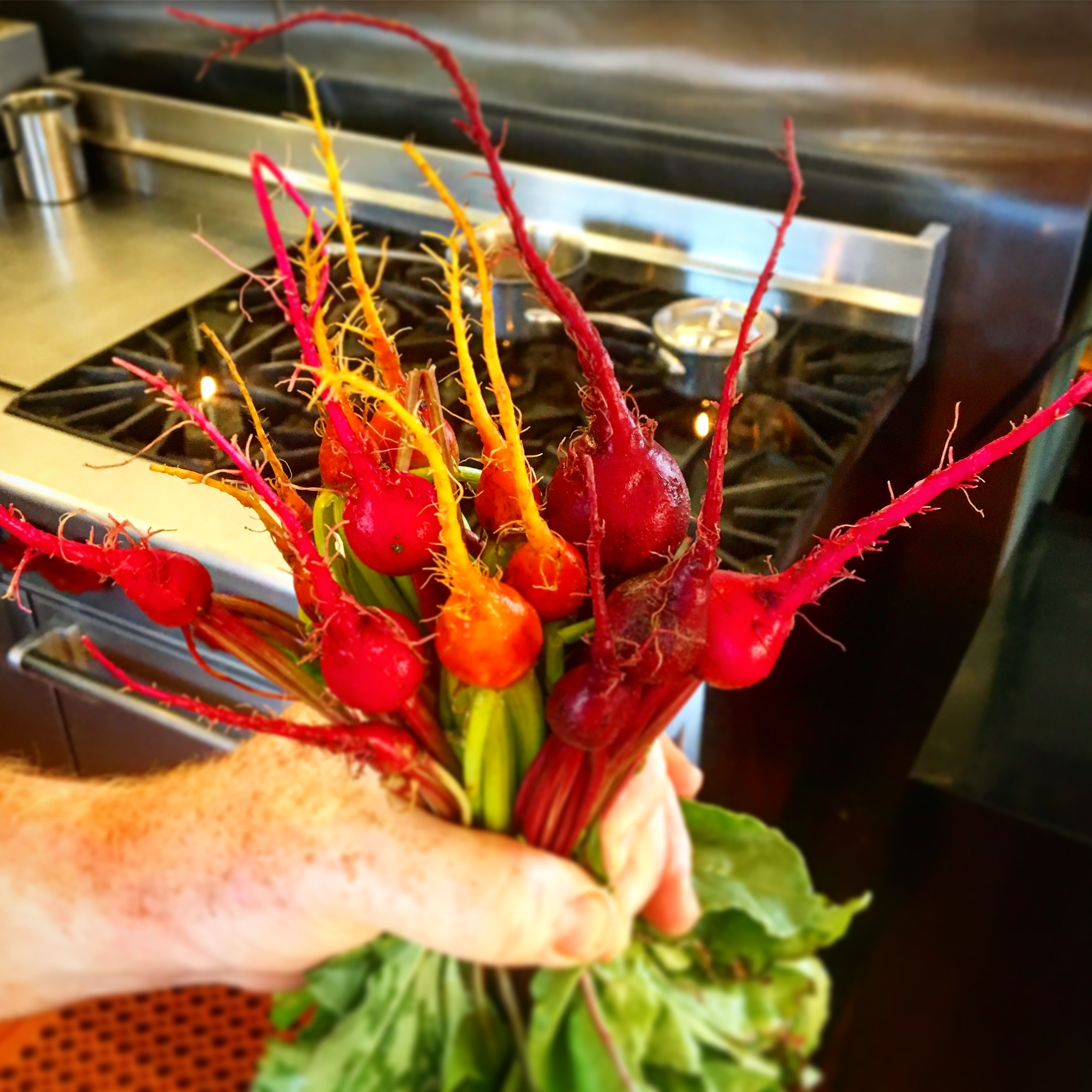Go Behind the Scenes of Vincent's Menu Development - Beets vs. Broccoli
We have a tradition of taking off the 4th of July, spending it with friends in Kingston.
It’s a nice break and a chance to appreciate the beginning of summer. It also corresponds with the beginning of sport crab season, one of the greatest privileges we have as residents of Western Washington; a chance to gather those amazing, dangerous, delicious, snappy beasts from our front yard.
This year the 4th fell on a Wednesday, condensing our work week.
Instead of prepping food on Wednesday for dinner Thursday, Friday and Saturday, we had a shorter week. Thursday morning would be our shopping day as we headed back from Kingston.
All the prep for our busy Friday and Saturday services would have to get done in the afternoon Thursday. I did my best to have a good plan going into this compacted week. I knew I’d need to have all my ducks in a row.
Because we had yet to get a lot of baby beets off of the farm, when I saw them on Jess’ Sunday Fresh Sheet, I was eager to feature them on a first course salad.
I had it all planned out.
I ordered a cool, herb-wrapped, Italian pecorino (because I was featuring Glendale’s sheep milk cheese on the cheese plate). And I ordered plenty of our arugula to go with it. I had an orange oil left over from early spring and we made a black pepper gastrique with some of our delicious quince-apple vinegar from our own orchard. It was going to be a great early summer salad.
All that changed when the beets arrived at the kitchen Thursday afternoon.
What there was of them, that is. The total harvest consisted of one small cardboard box with a couple of dozen nickel-sized beets in a trio of colors. Not even my very well developed imagination could think of a way to stretch this meager quantity to serve a full portion to the 80-odd guests we were expecting. Back to the drawing board.
What we did have was copious amounts of broccoli and cauliflower. Crab seemed a logical thing to feature. And we had some beautiful kohlrabi and radishes from the garden. A plan quickly took shape.
The broccoli was blanched in salted water, a little more cooked than we would normally cook it, then chilled immediately in an ice bath. We made sure to include the leaves of the broccoli too, both because of their delicious flavor, but also because they have so much intense pigment that would make for a more intensely colored soup. We sliced and then blanched the tops of green onions from the farm, to add a lily-like sweetness and more bright green color.
Separately we made a very simple purée of cauliflower, cooking thinly sliced cauliflower in milk, covered with parchment paper. This we pureed with just a little salt, setting some of the cooking liquor aside so that it would make a nice, thick base to hold the star of the plate: a Dungeness crab and kohlrabi salad.
The Dungeness crab is something I have been playing with for the past couple of years to try and figure out how to cook it better.
Experiments started a few years back after I was at a summer crab party at a friend’s house. I noticed the crab they were boiling was shriveled in the shell, light and dried out. Further observation showed me why; they boiled their crabs in unsalted water for in excess of 20 minutes. I had always been a fanatic about cooking crabs in very well salted water—it should taste like sea water—so as not to draw salinity and moisture out of the crab. And while I like cooking crabs whole so that I can save the Crab Butter, I found that there was a lower limit to how long the crabs needed to be cooked in order for the meat of the body to set. Boil a two-pound crab less than about 13 minutes and you were likely to have undercooked, gelatinous body meat. Not very appealing.
A few years back someone brought me some fresh crabs that they had cleaned but left raw, with the legs still attached to the halves of body. At the time I was a bit bummed not to have my beloved crab hepatopancreas (read “tomale” or “crab butter”, what the Japanese call “kani miso” or “crab miso”). But when I did cook the cleaned crab for about 5 minutes at a boil I had the pleasure of some of the plumpest and moistest crab I had ever eaten.
This year I have been experimenting with cooking the meat of cleaned crab well below a boil. I have discovered that the body meat needs to cook longer to set properly. This is odd since in a pre-cleaned crab the body meat is directly exposed to the cooking water, unlike the leg meat which is encased in its shell.
After a bit of experimentation I have come up with a recipe I like: Simmered at 165° for 8 minutes, and then iced. Crab cooked this way yields very pump leg meat that has a distinctive firmer texture that almost pops in the mouth; it’s something like a tender crunch.
It’s hard to explain until you try it, but I am loving the result. The meat is full of flavor and extremely moist.
With the crab, we made a little salad with threads of kohlrabi and radish, dressed simply with salt, pepper, olive oil and lemon. This would rest on a little dollop of cauliflower purée, so that it could stay put and sit above the level of the bright green broccoli soup. Finally we garnished the soup with fresh flowers and a drizzle of extra virgin olive oil.
In the end, we had just enough beets to feature a tiny “amuse bouche” beet salad for our guests. It was super cute and just the right start to a summer meal. The Broccoli Soup with Salad of Dungeness Crab and Kohlrabi, a dish that had started as a panicked reaction to a lack of beets turned out to be one of my favorite new preparations of this summer season.
It’s inspiration was all about being open to possibilities and listening to what the farm is giving us each week. The results seldom disappoint.
Farmhouse Dinner
July 6 & 7







